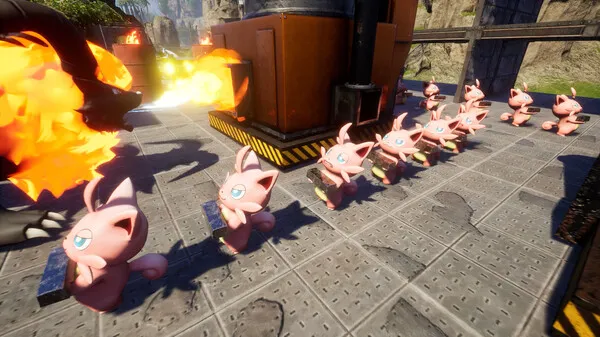Palworld is more than a simple “Pokémon with guns” meme—it’s a deep survival-crafting game where players must balance creature collection, base management, resource gathering, combat, and automation. Its blend of survival mechanics with Pal companionship creates a unique experience that rewards strategy as much as exploration. Yet, new players often stumble when their bases collapse under poor planning, their Pals become overworked, or they can’t scale production for late-game challenges.
This long-form guide explores how to thrive in Palworld step by step, from the basics of capturing Pals to building advanced automated factories. Each of the ten major sections focuses on a chronological stage of play, highlighting tips, strategies, and problem-solving methods. By following this progression, you’ll not only survive but also master the art of creating a thriving Pal-powered empire.
How to Get Started in Palworld
The first few hours are about survival. Collect resources like wood, stone, and berries. Craft a simple weapon, set up a Palbox, and capture your first Pals.
When choosing your starting Pals, prioritize utility over cuteness. Look for creatures with suitabilities like Planting, Logging, Mining, or Watering. These workers will form the backbone of your base long before you need combat specialists.
Beginner essentials
- Place your Palbox in a central location.
- Always capture multiples of common worker Pals.
- Craft spare tools and weapons early—you’ll burn through them quickly.
How to Capture and Manage Early Pals
Capturing isn’t just about combat—it’s about building your labor force. To capture efficiently, weaken enemies with melee or ranged weapons, then throw a Pal Sphere.
Don’t hoard every Pal you catch. Instead, manage your roster actively. Release extras or use them in ranches for resources. Assign only those Pals whose skills align with your immediate needs to base duties.
Capture priorities
- One Pal with Watering for farms.
- One Pal with Kindling for smelters.
- A Pal with Mining for ore collection.
How to Build Your First Sustainable Base
Your first base must support food, crafting, and rest. Focus on zoning: group plantations, kitchens, and feeding boxes together; put smelters near ore storage; and keep beds close to food sources.
Avoid sprawl. Long walking distances drain Pal stamina and reduce efficiency. Place storage chests near stations, and assign clear roles so each Pal knows its loop.
Layout tips
- Centralize the feeding box.
- Cluster similar workstations (furnaces in one corner, farms in another).
- Keep living amenities compact to save time.

How to Keep Pals Fed and Healthy
Food loops are the biggest bottleneck early. Without steady crops and cooked meals, Pals starve and refuse to work.
Assign Pals to Planting and Watering, then connect plantations to a kitchen. Cooked meals last longer and restore more hunger than raw food. Position everything within short walking distance to avoid wasted time.
Food management checklist
- Always have at least one dedicated farmer Pal.
- Cook meals like Berry Jam or Grilled Mushrooms for efficiency.
- Keep plantation → kitchen → feeding box as a tight loop.
How to Optimize Resource Gathering
Resources like ore, wood, and fiber gate your progress. The trick is to pair your base near multiple nodes (e.g., stone and ore veins).
Use worker Pals specialized in Logging and Mining, and assign backups. Create storage near resource sites so Pals don’t trek halfway across your base to deposit items.
Gathering principles
- Redundancy: at least two miners and two loggers.
- Storage: raw-resource chests adjacent to nodes.
- Transport: at least one Pal focused solely on carrying goods.
How to Automate Crafting and Production
Mid-game is where Palworld shines: Pals can automate smelting, plank-making, cooking, and even weapon crafting. But automation fails if logistics aren’t set up.
Separate input chests (for ore, logs, crops) from output chests (ingots, planks, meals). Place them strategically around workstations to shorten Pal paths. Assign Pals with high Handiwork skill to crafting roles.
Automation setup tips
- Two furnaces per ore chest for smooth smelting.
- Place output chests near next-stage consumers (e.g., ingots by weapon bench).
- Dedicate at least one transporter Pal per production cell.

How to Manage Pal Sanity and Prevent Burnout
Overworked Pals collapse, hurting production. Sanity drops from hunger, overwork, or poor amenities.
Cluster beds, baths, and food near each other to minimize downtime. Rotate staff between active duty and Palbox rest to avoid collapse. Always keep medicine stations stocked for recovery.
Burnout prevention
- Two Pals per role to distribute workload.
- Baths within sight of beds and food.
- Rotate teams in and out of the Palbox pasture.
How to Prepare for Raids and Combat
Enemy raids increase with base progression. If defenses cut through your production areas, automation collapses.
Create a defense lane away from resource hubs. Place turrets, strong walls, and combat-ready Pals near entry points. Keep utility Pals away from the front lines.
Defense strategies
- Build chokepoints to funnel enemies.
- Isolate defense power/fuel from production.
- Keep weapon repair benches near defense lanes.
How to Build Advanced Outposts
Late game requires resources far from your main base. Instead of relocating, create outposts dedicated to single resources.
Each outpost should have its own mini-loop: input chest, processing station, output chest, and minimal living facilities. Keep staff small and specialized.
Outpost rules
- Focus each outpost on one product (ore, food, wood).
- Include minimal beds and food supply.
- Visit periodically to collect output and resupply.

How to Continuously Audit and Improve Bases
The final step is constant iteration. Production slows when items bottleneck, Pals wander, or storage overflows. Conduct audits daily.
Check each cell: Are furnaces idle? Is food piling up uncooked? Are transporters overloaded? Fix by moving chests, adding Pals, or splitting queues.
Audit checklist
- Review Pal sanity levels in Palbox.
- Watch transporters—too much walking = poor layout.
- Track daily production totals (ingots, meals, ammo).
Conclusion
Palworld is a game of survival through efficiency. Success doesn’t come from simply catching the strongest Pals—it comes from designing loops, preventing burnout, and scaling production carefully. By following the chronological “how to” steps—starting with survival basics, then food loops, resource gathering, automation, sanity management, defense, outposts, and auditing—you’ll transform your base into a thriving Pal-powered empire.

















